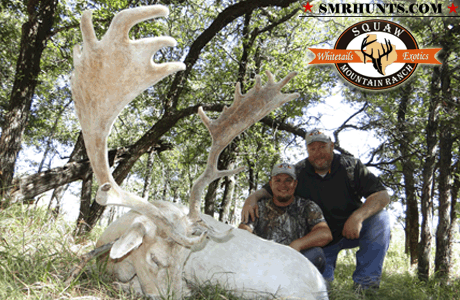
Fallow deer are often a low maintenance species. When it comes to fallow deer eating habits, they are not fussy when choosing where they live and what they will eat.
In the 11th century, the Romans introduced fallow deer to the Britains. Today they can be found in Britain and Wales as well as Scotland and Northern Ireland. In the United States, there is a good population in the Texas area which is why hunters tend to flock there when they want to target fallow deer.
They typically choose to live where there is plenty of vegetation. Forest, shrublands, grasslands, pasturelands, and plantations are all common areas where you will find fallow deer. They tend to like habitats that have a mixed vegetation type. They also tend to lean towards habitats that are broad-leaf forests with different levels of density. Fallow deer can also live in a variety of climates ranging from cool-humid to warm-dry areas. Their ability to adapt to many different types of settings makes them able to live in a variety of places around the world.
Details of Fallow Deer Eating Habits
Fallow deer are also ruminants. This means they chew their food, spit it out, and then take it back in again. Fallow deer as well as other types of deer do not digest food like we do with enzymes in the stomach that break down food into proteins, carbohydrates and fats that are later absorbed in the intestines. Instead, all of the grass and plants the fallow deer eat are broken down into compounds by fermentation.
Fallow deer do not truly receive the nutrients from their food until their food is swallowed for the second time. During this process the food passes through different chambers of the stomach. When it finally gets to the third and final chamber of the stomach, microbes multiply and produce fatty acids that provide energy and use nitrogen in the food that synthesizes protein. This is eventually turned into amino acids. Those amino acids along with vitamins and nutrients the fallow deer need to survive are created through a chemical recombination that makes its way into the intestines and passes through linings in the gut and eventually into the bloodstream.
This whole eating process is complex and takes several hours from the first bite until the final bite of the food that is eventually regurgitated.
Types of Food Consumed in Fallow Deer Eating Habits
When it comes to eating, fallow deer typically graze on different types of grass. Fallow deer are often referred to as “herbivorous” grazers. They may also look for leaves as well as cereals, berries, and acorns. They are also known to eat herbs, dwarf shrubs, buds, shoots, and bark. Depending on the season and what may be available, fallow deer are adaptable and are not fussy eaters.
Just as our diets may vary with the seasons, so does the diet of the fallow deer. From about March until September, grasses are the main food along with herbs and broadleaf. From September through the end of December, acorns and mast are the major foods. During the winter months, foods include bramble, bilberry, and grasses.
Although fallow deer can eat anytime the mood strikes them or whenever they stumble across food, they are more likely to graze in the morning and evening. They do not commonly graze during the mid-afternoon hours.
Hunters monitor fallow deer eating habits carefully. Fallow deer are widely sought after by hunters for their impressive antlers. Often the target of trophy hunts, their antlers can measure up to 70 centimeters in height. Since there are no seasonal restrictions on hunting fallow deer in Texas, it is a year-round activity.
